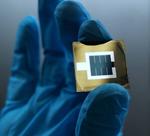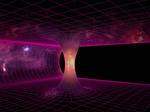Other

“The travelling salesman problem is considered a prime example of a combinatorial optimisation problem. Now a Berlin team led by theoretical physicist Prof. Dr. Jens Eisert of Freie Universität Berlin and HZB has shown that a certain class of such …
“The scientists designed a special cell in order to observe the transport of lithium-ions between the anode and the cathode in a solid-state Lithium-Sulfur battery. Since lithium can hardly be detected with x-ray methods, HZB physicists Dr. Robert Bradbury and …

“Solar cells made from metal halide perovskites achieve high efficiencies and their production from liquid inks requires only a small amount of energy. A team led by Prof. Dr. Eva Unger at Helmholtz-Zentrum Berlin is investigating the production process. At …

“The material class of halide perovskites is seen as a great hope for even more solar power at even lower costs. The materials are very cheap, can be processed into thin films with minimal energy input and achieve already efficiencies …

“The current world record of tandem solar cells consisting of a silicon bottom cell and a perovskite top cell is once again at HZB. The new tandem solar cell converts 32.5 % of the incident solar radiation into electrical energy …

“Quantum computers promise significantly shorter computing times for complex problems. But there are still only a few quantum computers worldwide with a limited number of so-called qubits. However, quantum computer algorithms can already run on conventional servers that simulate a …

“The market for rechargeable batteries is growing rapidly, but the necessary raw materials are limited. Sodium-ion batteries, for example, could offer an alternative. A joint research group from HZB and Humboldt-Universität zu Berlin has investigated new combinations of electrolyte solutions …

“Electrical energy from wind or sun can be stored as chemical energy in hydrogen, an excellent fuel and energy carrier. The prerequisite for this, however, is efficient electrolysis of water with inexpensive catalysts. For the oxygen evolution reaction at the …

“Physicists know about the huge chasm between quantum physics and the theory of gravity. However, in recent decades, theoretical physics has provided some plausible conjecture to bridge this gap and to describe the behaviour of complex quantum many-body systems, for …

“Superconducting coupling between two regions separated by a one micron wide ferromagnetic compound has been proved by an international team. This macroscopic quantum effect, known as Josephson effect, generates an electrical current within the ferromagnetic compound made of superconducting Cooper-pairs …

